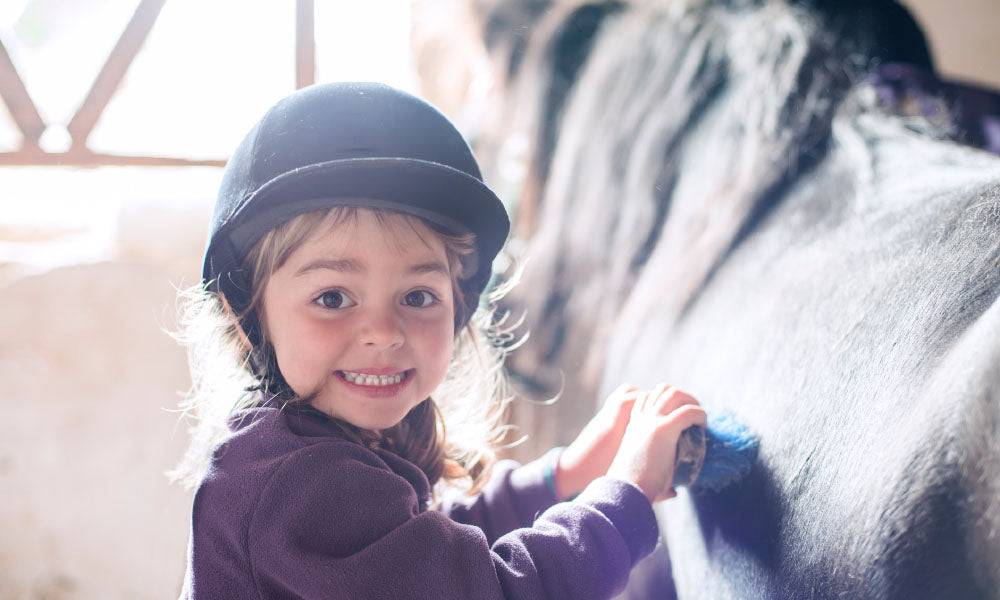When we began navigating the COVID-19 pandemic, we never imagined just how much of a ripple effect it would cause – in everything from the way we live, work, and educate our children. In 2020, we saw parents juggling the balance of working from home while supporting their kids in adjusting to a new world of remote learning. Over the past year, we have also seen a continued shift in the protocols and recommendations from organizations including the CDC about how to protect ourselves and our loved ones from the virus.
Ahead of this school year, new guidance was released by the CDC which removed schools’ “test to stay” mandate and de-emphasized routine testing and screening for COVID-19 in schools. Responsibility for COVID-19 safety and monitoring is shifting from schools and public entities to individuals – parents and guardians like yourselves.
The good news is that we’re seeing a downturn in cases overall. Where we were once seeing around 900,000 cases a day in early January 2022, then 150,000 per day in mid-July, we’re now down to less than 30,000 cases a day at the end of September in the U.S., according to the CDC. As the CDC adjusts requirements, it’s important to keep our guard up against infection and reinfection, and as we enter a new respiratory infection season with familiar foes. While COVID-19 cases seem to be on decline at the moment, the fight isn’t over, at least not in the way people would like for it to be.
Of note, public health experts believe many COVID-19 cases are going unreported due to the increasing access and acceptance of at-home testing. Moreover, the world had more than 400,000 new cases per day at the end of September. In early June during the Australian respiratory season, flu cases were reported to be higher than the five-year national average. Unfortunately, this occurred concurrently with a surge of COVID-19 cases from the Omicron BA.4 and BA.5 sub-variants.
While many parents welcome fewer mandates for their children, practices like increased social distancing and regular hand washing are still important measures that will reduce spread of highly contagious viruses like COVID-19– and now even more so with flu season right around the corner. Parents continue to balance the need to keep their kids safe while also letting them experience the joys and excitement that comes along with each new school year.
As we head into the upcoming flu season and our children are exposed to more people, travel and participate in indoor activities, parents and guardians need to be mindful of the following best practices to keep their families safe and healthy:
- Speak with your Pediatrician about Vaccinations
Make an informed decision about COVID-19 vaccination and the influenza vaccination (flu shot).
- Keep an Open Dialogue
Be proactive with kids in having an open dialogue about their health – both physical and mental. Caregivers should check in regularly about how they are feeling.
- Recognize the Symptoms
Know the symptoms and when they present, test right away. The most common symptoms are similar to a cold or flu, which can leave parents guessing, “Is it a cold or is it COVID or is it flu?”
- Actively Use At-Home Tests
When in doubt, the fastest and most convenient way to know is to make use of an at-home test. Keep a few at-home tests, like the BD Veritor At-Home COVID-19 Test, in the medicine cabinet. When testing at home, carefully follow the instructions and don’t deviate from the steps outlined because doing so could result in a false positive. Also, pay close attention to expiration dates because expired tests could affect the accuracy of results.
- Test Positive? What’s Next?
If an at-home test is positive, always follow CDC guidance, which currently recommends ending isolation after five days if you have no symptoms and wearing a mask around others for five additional days. Note that PCR tests may produce positive results for a longer period of time than an antigen test.
- What about boosters?
Vaccines are the single most important tool to protect us from becoming infected with COVID-19 and the flu. Have a conversation with a pediatrician about eligibility for both the vaccine, boosters, and bivalent variant-specific boosters. During these conversations, take into consideration that cold and flu season is now upon us and opt for both the COVID-19 vaccine and the flu vaccine if available and recommended by your physician.
- What about masks?
In the U.S., we went from recommendations for masks, to mandated masks, to lifting of mandates. Now mask-wearing is a personal choice for adults, and for the parents of children. Choosing to wear a mask should be a respected choice. Asking your child to wear a mask may be informed by learning the local infection rate for COVID-19 and for the flu – if you are learning that there is an epidemic or outbreak in your local area, consider mask-wearing.
This school year poses challenges both old and new, but for parents, giving kids the best chance to stay healthy and stay in school is always important. Right now, it’s paramount for parents to create stability and safety for their kids so they can enjoy everyday freedoms.
COVID-19 outbreaks create unwanted disruptions and distractions. The best thing parents can do during this time is to use wellness check-ins as a small moment to connect with their kids, build trust and confidence. Keep them safe and well by getting them vaccinated, taking precautions and “test to know” when symptoms present.



